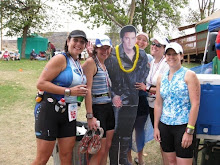What is imagery?
- Imagery is also called visualization or mental rehearsal
- Imagery means using all of your senses (e.g., see, feel, hear, taste, smell) to rehearse your sport in your mind.
Why should you use imagery?
- To help you get the most out of training. Top athletes use imagery extensively to build on their strengths and help eliminate their weaknesses.
- To compete more effectively. Imagery not only helps athletes to regulate the anxiety they experience during competitions, but also helps athletes to stay confident, focused and mentally tough.
- To speed up your progress on the road to top. Athletes who have reached the highest levels in their sport have used imagery throughout their career as a tool for developing their sport skills.
- To help stay motivated along the way. Imagery is also a tool that can help athletes to maintain a vision of what they would like to achieve in their sport. Athletes can also use imagery to assist them in setting their daily goals, as well as to stay motivated during tough training sessions.
- To keep in top form when training is not possible. Injuries will inevitably occur during athletes' careers, which will cause them to miss training sessions. In these situations, athletes can use imagery to help them to maintain their abilities during the rehabilitation process and to help them cope with their injuries. Imagery can even help the healing process to move along more quickly.
How do the best athletes use imagery?
From studying how the best athletes use imagery, we know that imagery is most beneficial when it is:
- Vivid and detailed
- Incorporates all senses (see, feel, hear, smell, and taste)
- Occurs in "real-time"
- Has positive focus
Tips for getting started
- Practice makes perfect. Imagery is a skill, and, just like any skill that you perform in your sport, you will need to practice in order to be perfected.
- Quality... not quantity. Because imagery is a mental skill, you will need to concentrate on creating and controlling your images, which can be tiring when you first get started. For this reason, it is best to begin your imagery training by imaging high quality images for short periods of time, and then gradually increasing the time you spend imaging.
- Set the scene. Try to make your imagery as realistic as possible by re-creating important details of your sport setting (e.g., practice and competition venues) in your mind's eye. By including details like the color of your opponent's uniform or the sound of the spectators' cheering, you will feel like you are really experiencing the performance that you are imaging.
- Plan your imagery. Images of your sport can frequently pop into your head, but to really benefit from imagery, you should plan the content of your imagery to meet your current needs. Here are just some examples:
- If you are struggling to perform a certain skill or strategy in game situations, you should try imaging yourself performing that skill or strategy perfectly and confidently in an upcoming game.
- If you often let distractions get in the way, try imaging yourself staying relaxed and focused in the presence of those distractions.
- If you have problems handling your nerves in competition, try to imagine yourself performing exactly the way you want to under those conditions that normally would make you nervous.





















No comments:
Post a Comment